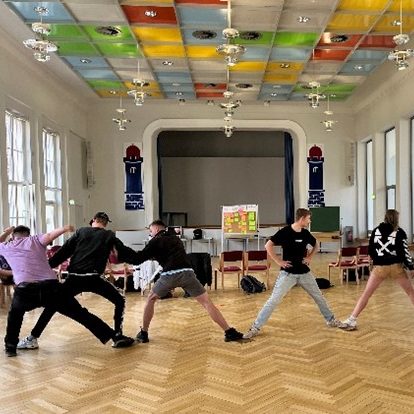
In workshops with teenagers and young adults, tact is often required. On the one hand, Gen Z is open and curious and has an intrinsic desire for development and self-realization – but at the same time they are also critical and have high expectations, particularly with regard to the meaningfulness of tasks and work instructions. Added to this are personal characteristics, such as differences in their social background, cultural background or social and linguistic skills, which make young people a very heterogeneous group of participants. How can learning spaces be designed in such a way that this target group is reached in the best possible way?
1. Set a clear framework
Establish rules for the workshop together with the participants. Clarify and explain the different roles of the people present. And guide everyone through the agenda once. This way, the young people know what to expect and get the feeling from the outset that they can help shape the framework themselves.
2. Clarify expectations and needs
Listen carefully to feedback, questions and uncertainties and give the group space to express their needs. Participants are best able to open up in a safe space where their concerns are taken seriously.
3. Make common ground tangible
Even if the workshop participants already know each other: There are always new things to discover. Uncover the commonalities within the group – this not only strengthens the sense of togetherness, but also the willingness to cooperate.
4. Include everyone
Make sure that not only the loudest voices are heard, but that quiet voices also have their say. This is the only way to ensure that the best possible results are achieved and that they are supported by the entire group.
5. Provide variety
Make sure that neither boredom nor excessive demands arise. With a mixture of games and learning content as well as alternating individual and group work, you can create a dynamic event that creates variety and keeps attention levels high.
6. Create a link to your everyday reality
Develop concrete scenarios that the participants can relate to. The closer the examples are to the reality of the participants’ lives, the easier they are to understand. This strengthens identification with the task, but above all with the results.
7. Generate a sense of achievement
Think in advanced about where you can achieve quick wins. A sense of achievement not only leads to a short-term mood boost, but also increases the motivation and commitment of those involved.
8. Define shared visions
Focus on the big picture: What are the long-term goals of the workshop and what impact will this have on the group and each individual? In this way, you create the conditions for a sustainable impact and lasting perpetuation.
9. Open up spaces for reflection
Let the participants reflect on the new content by asking specific questions: What did we talk about? What worked well? Where is there still room for improvement? On the one hand, this helps to uncover ambiguities and, on the other, to internalize the results.
10. Choose the right time
We’ve all learned that you shouldn’t go swimming after eating. But it is also difficult to work on a full stomach. When designing the workshop, take into account your performance throughout the day and plan appropriate energizer methods for the lows.
There are numerous methods and tools that help you to take these 10 points into account and implement them. Wondering what they are? We will be happy to advise you!
Your contact person

Nora Zupan
Managing Consultant | Innovation design and co-creation
| Phone | +49 30 5360 77-21 |
|---|---|
| nora.zupan@ifok.de |
